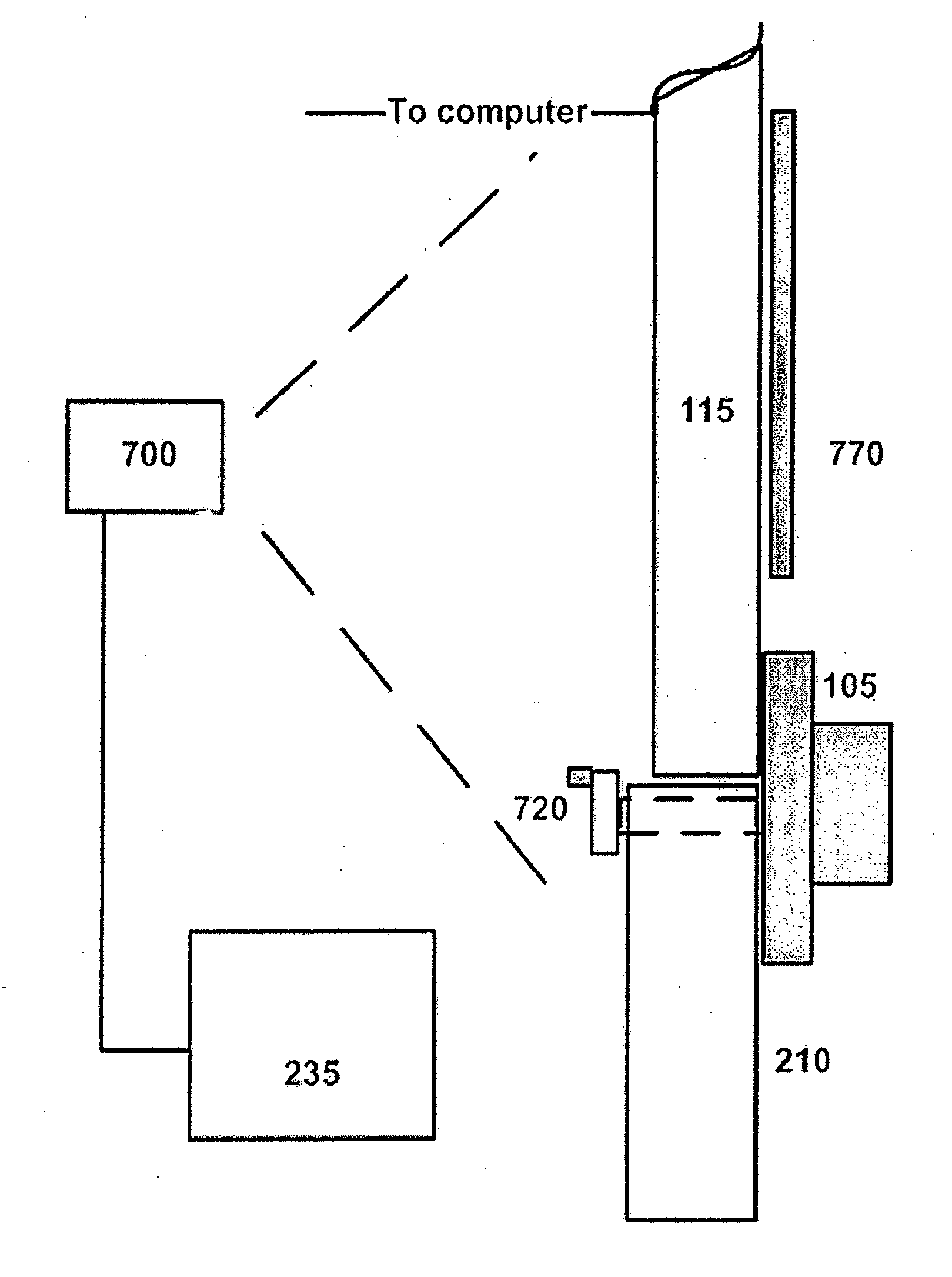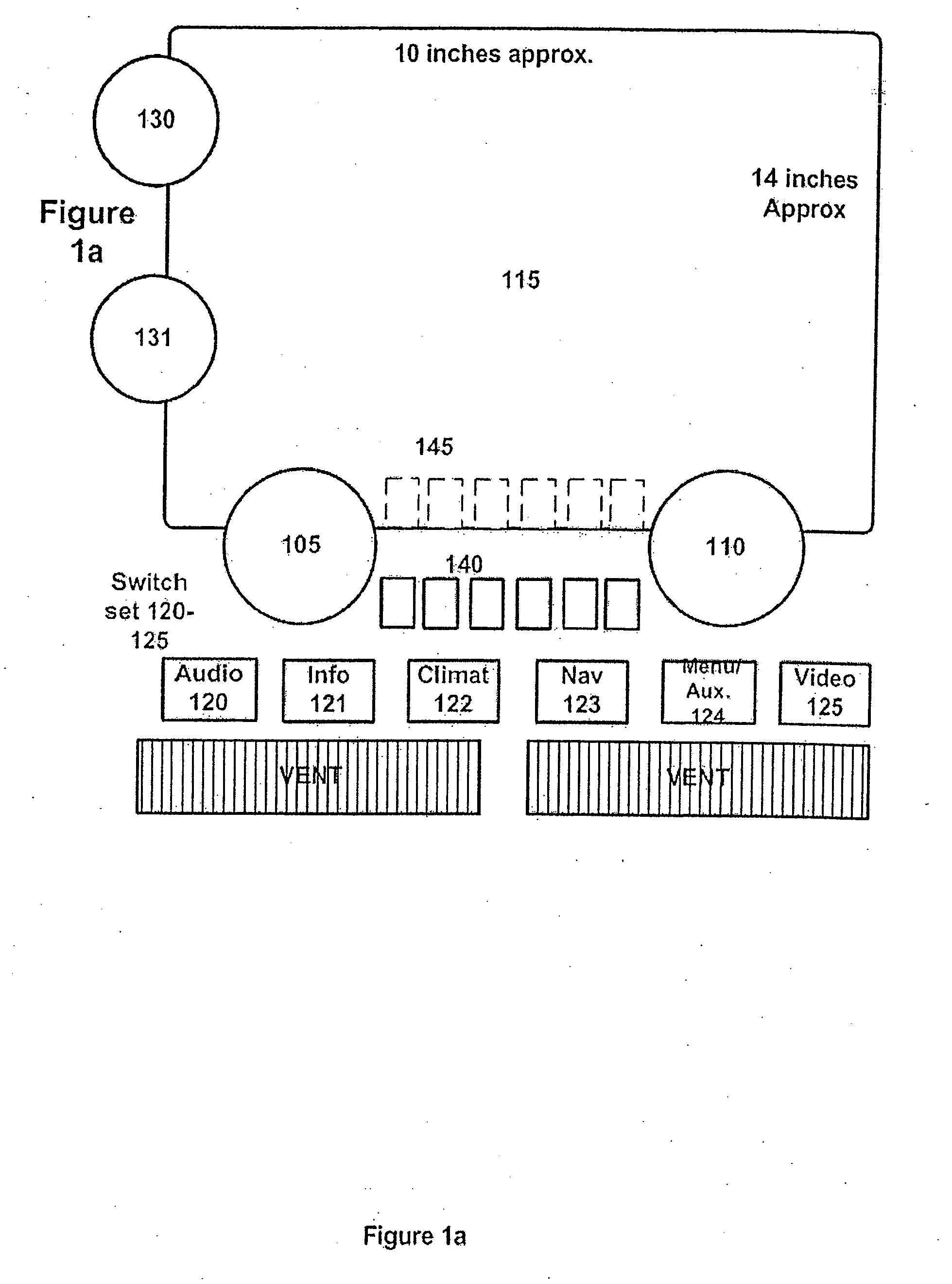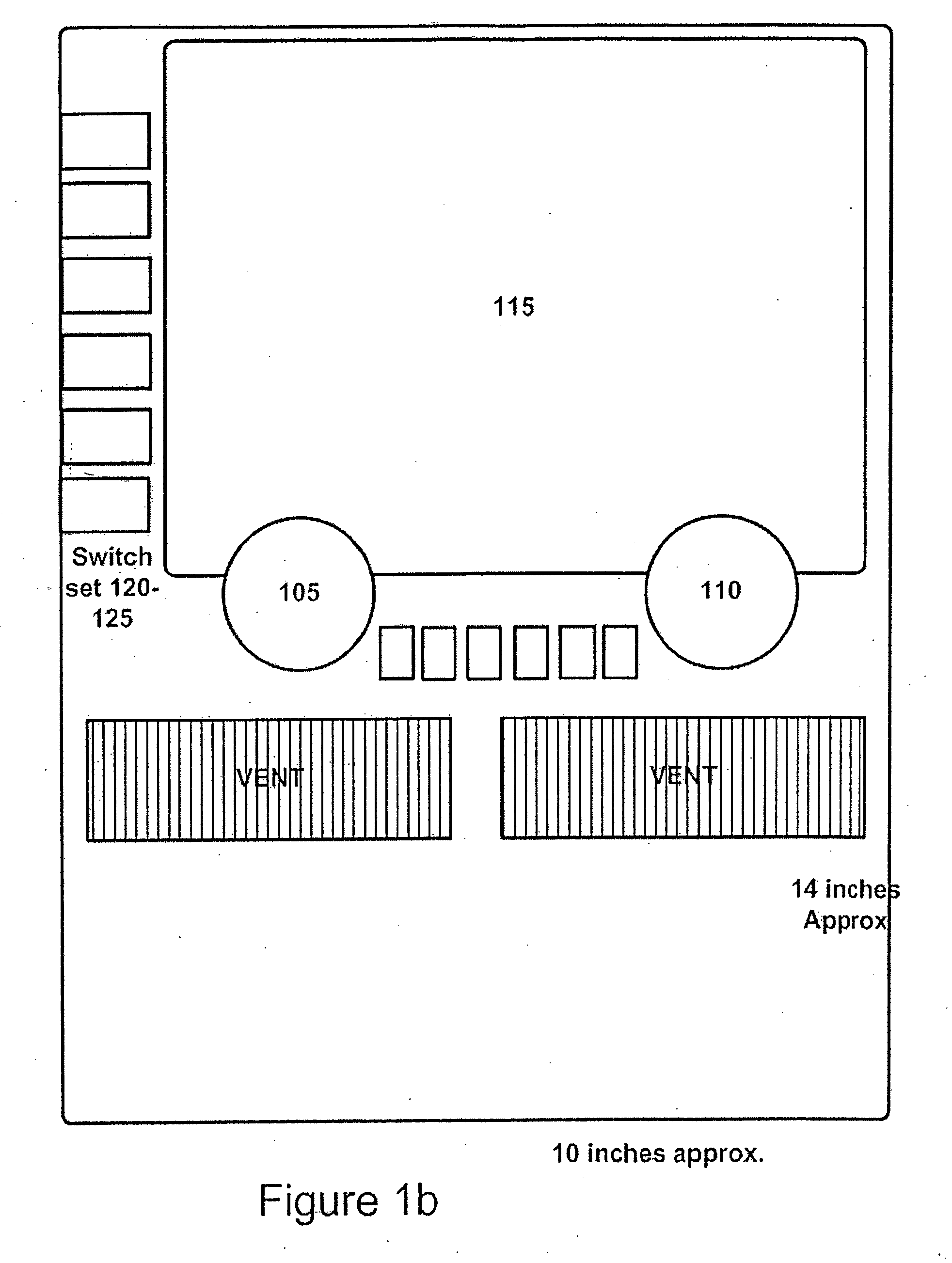Method and apparatus employing multi-functional controls and displays
a multi-functional control and display technology, applied in the field of flat panel based control system interfaces, can solve the problems of d work, no one allows any reconfiguration of classical controls such as knobs and switches, parallax and other reading problems, etc., and achieve the effect of low cos
- Summary
- Abstract
- Description
- Claims
- Application Information
AI Technical Summary
Benefits of technology
Problems solved by technology
Method used
Image
Examples
Embodiment Construction
[0048]FIG. 1a is a front view of a basic embodiment of the invention, located in the “center stack”, 100, of a vehicle instrument panel. A typical center stack is approximately 10 inches wide and 14 inches high, though dimensions may vary from top to bottom (where the center console or transmission hump is), and other cars or trucks may have different dimensions. As shown the air vents commonly found at the top of the center stack have been moved to the middle, to allow for putting the most display area as close to the drivers line of sight as possible. The display in FIG. 1 is blank, with the system turned off. Examples of it “on” for different selected functions on are given below.
[0049]Two knobs having reconfigurable functions, 105 and 110 overlap a standard flat panel display 115, (in this case a large LCD type having a width of 9.3 inches and a height of 6.2 inches, with a diagonal measurement of 11 inches—double the area of the 8 inch screens which are the maximum used today)....
PUM
 Login to View More
Login to View More Abstract
Description
Claims
Application Information
 Login to View More
Login to View More - R&D
- Intellectual Property
- Life Sciences
- Materials
- Tech Scout
- Unparalleled Data Quality
- Higher Quality Content
- 60% Fewer Hallucinations
Browse by: Latest US Patents, China's latest patents, Technical Efficacy Thesaurus, Application Domain, Technology Topic, Popular Technical Reports.
© 2025 PatSnap. All rights reserved.Legal|Privacy policy|Modern Slavery Act Transparency Statement|Sitemap|About US| Contact US: help@patsnap.com



